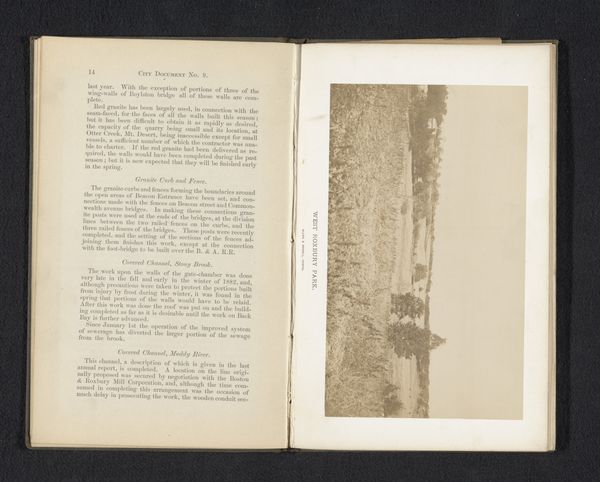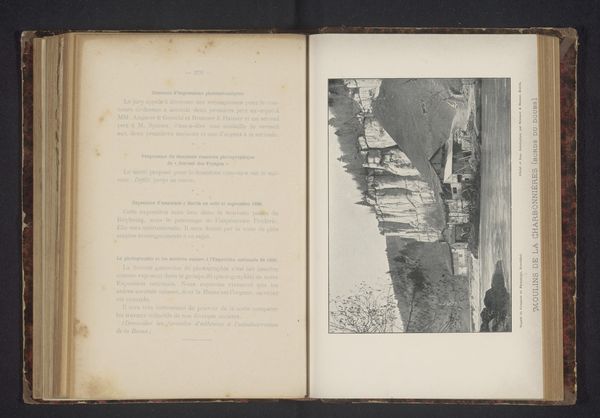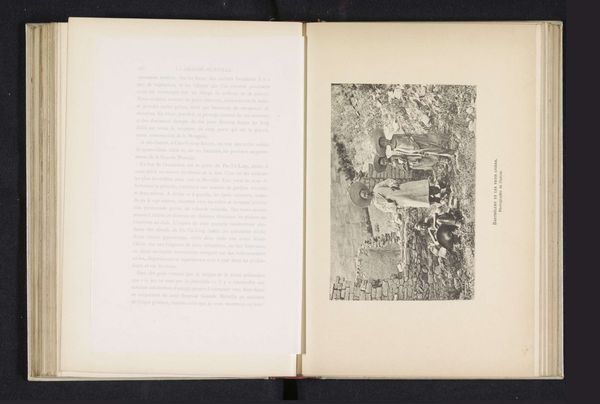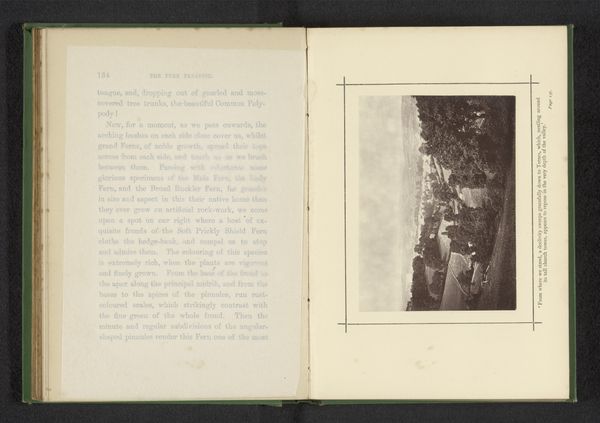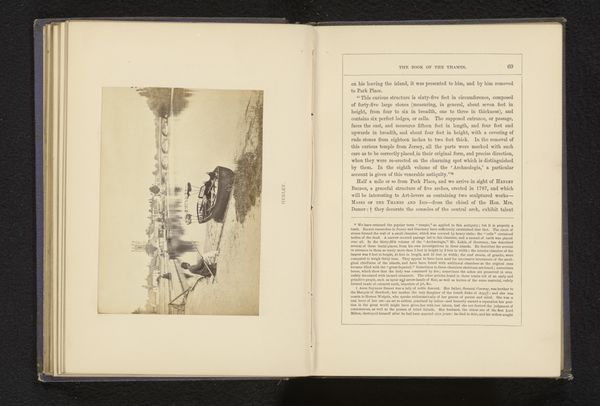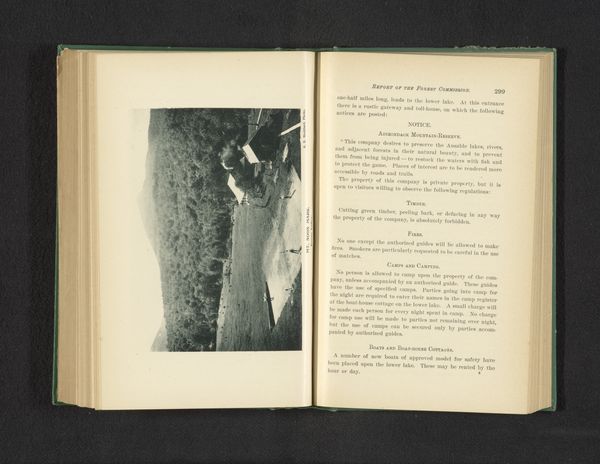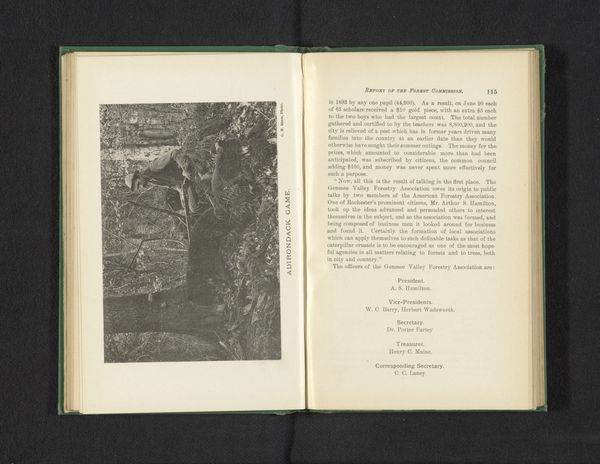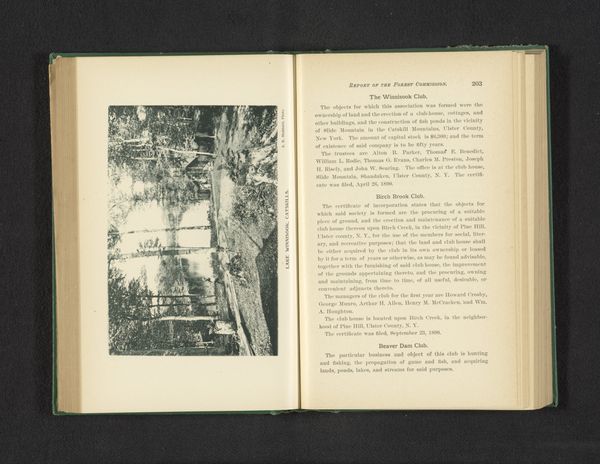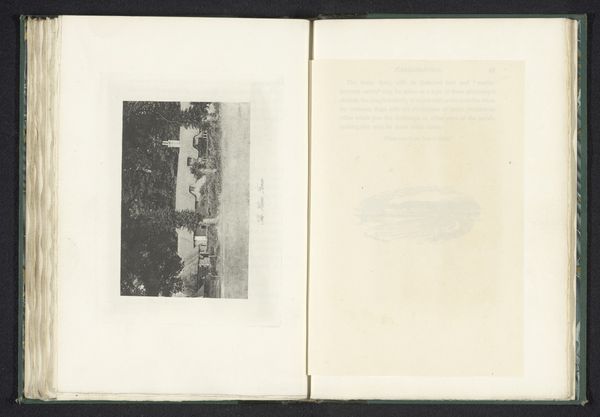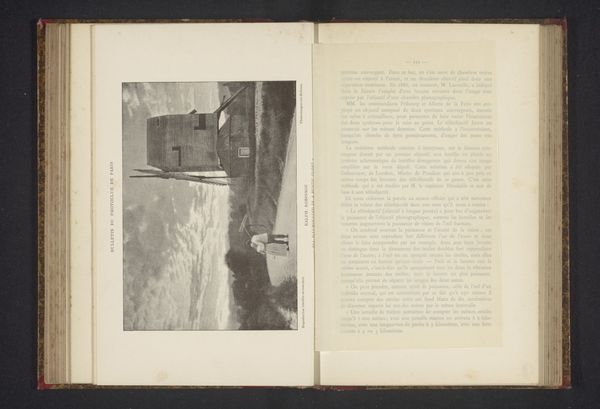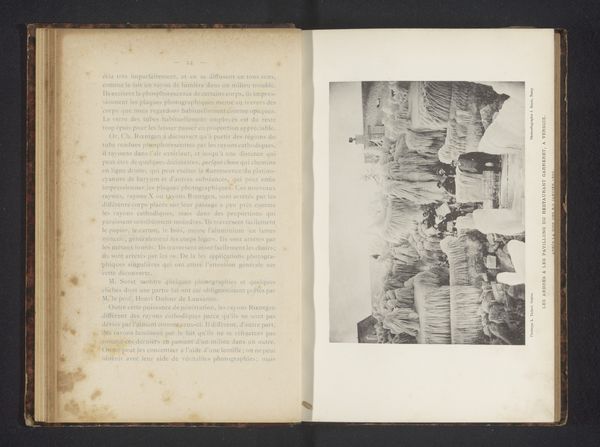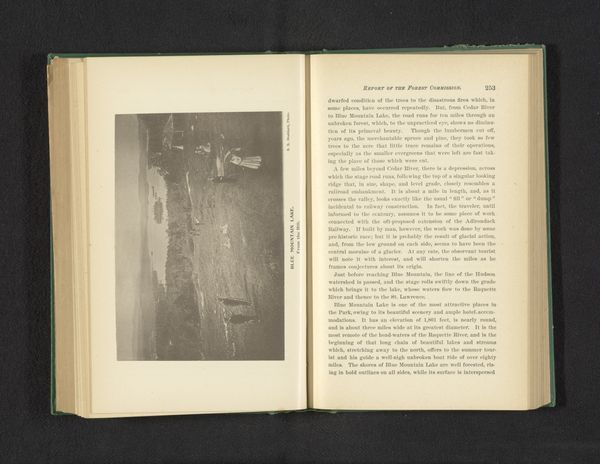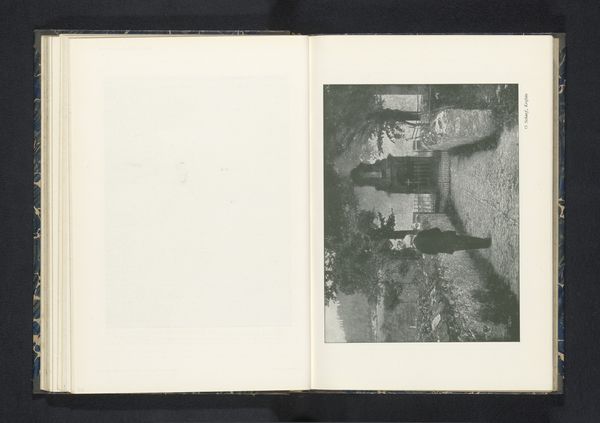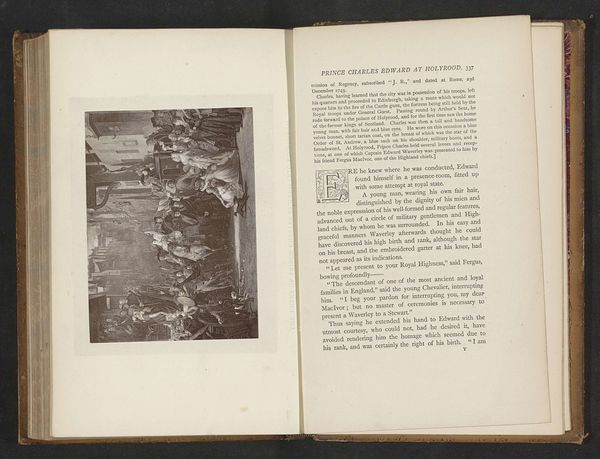
print, photography
#
portrait
#
aged paper
# print
#
typeface
#
photography
#
personal sketchbook
#
hand-drawn typeface
#
thick font
#
white font
#
genre-painting
#
handwritten font
#
thin font
#
realism
#
historical font
#
small font
Dimensions: height 110 mm, width 154 mm
Copyright: Rijks Museum: Open Domain
Editor: So, we’re looking at "Gezelschap met een man die een portret tekent," or "Company with a man drawing a portrait," created before 1902. It’s reproduced as a print in a book spread. I find it fascinating that photography is presenting another form of representation! What strikes you most about it? Curator: It’s interesting to consider this image within the framework of artistic production and labor. We're seeing a representation *of* artistic production – a portrait being made. But consider *how* we're seeing it: through the mechanics of photography and the printing press. How does the mediation affect the "truth" or the "aura," to use Benjamin’s term, of the artistic moment? Editor: That's a great point about the layers of mediation. The artistic moment captured, reproduced via photography and then printed. So, the act of drawing the portrait, in its immediacy, is twice removed, at least. Curator: Exactly! And consider the social context implied by these reproductive technologies. Who had access to photography and printed materials at this time? Were these technologies democratizing art, or were they reinforcing existing power structures through their dissemination? What kind of labour do the making of photography and the production of books presuppose at the time? Editor: So, looking at the labour involved in each step adds another dimension. It makes me wonder about the paper itself—the raw materials, the printing process. Each stage embodies labor and economic factors, and I imagine there are inequalities implicit at each level of production. Curator: Precisely. Thinking about the materials and modes of production makes the seemingly simple image into a complex document reflecting social relations, economic realities, and evolving artistic practices. We’re not just looking at a picture; we're examining a record of a particular moment in the history of art and technology. Editor: I'm glad we dug a little deeper here; I’ll definitely be looking at art differently from now on, seeing them as a set of processes and a kind of historical documentation of materials and labour involved, too.
Comments
No comments
Be the first to comment and join the conversation on the ultimate creative platform.
